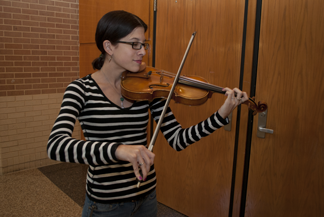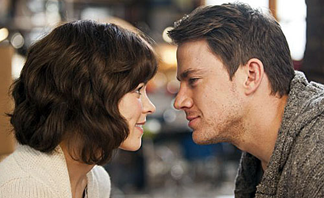Self-taught quilter, painter and dollmaker Sybill Reddick spoke to a group of a few dozen students about the inspiration for her artwork during her exhibition Our Grandmother’s Hands Feb. 23 on NE Campus.
Reddick’s mother and grandmother were traditional quilters, but she was never taught the craft. It wasn’t until the mid-’70s that she learned how to sew and began making quilts for her children, she said.
Unlike her mother and grandmother, she does not use patterns for her quilts.
“The reason I don’t do the traditional is because it’s so repetitive,” she said. “I’m easily bored, and I never would finish it.”
Reddick said the inspiration for her quilts comes from personal experiences. One of the quilts she had on display was inspired by one of her daughters going through a divorce.
When her daughter separated from her husband, she was forced to leave many of her quilts and dolls behind.
Reddick began making that particular quilt in 2005 as a replacement for the ones her daughter left behind and didn’t finish it until the end of 2011.
“I have a lot of symbolism in that quilt,” she said.
NE student Eman Meselu, who is from Africa, was impressed with the show. Meselu said her grandparents used to make quilts similar to Reddick’s.
“I like how it’s all natural and handwork,” she said. “It takes a lot of time and a lot of patience to do these.”
One of Reddick’s quilts was displayed in the Civil Rights Museum in Birmingham, Ala., for Black History Month and is currently on display in the NE library.
Her dollmaking and painting began much later in life. In the early 1990s, her husband’s job took them to the Mississippi Delta.
“I don’t know if any of you know what it’s like, but it’s a depressing place,” she said. “I became very depressed, so I said, ‘I gotta do something to try to lift myself.’”
She needed something to put her energy into, so she began making the dolls, she said, and her husband would take them to work to show them off.
After that, people started coming to Reddick’s home wanting to buy her dolls. She was very protective of her dolls and wouldn’t sell them at first because they were like family, she said. Now, she has several packed away in plastic bins in her home.

Justin Gladney/The Collegian
NE English instructor and Reddick’s daughter Annette Cole said her mother used to draw pictures for her and her sister when they were young.
“All the pictures looked exactly the same: a little round-headed lady, no neck, a little triangle body, hands, feet, and she might have something ruffly around her neck,” she said. “Fast forward, 30 years later and this is what the dolls are looking like.”
Reddick’s mother used to make clothes for her when she was a little girl, and she made clothes for herself and her daughters when they were young, but now she makes clothes only for her dolls.
“When TJ Maxx and Marshalls came along, that was it,” she said. “Why should I spend my time sewing when I can do the same thing at TJ Maxx?”
One day, she decided to try painting.
“I’m not an artist, but I know how to put paint on the canvas,” she said. “My youngest daughter is an artist, and she’s good. If she can do that, she must have gotten it from somewhere.”
Reddick said she admires artists like Pablo Picasso and Paul Gauguin and is inspired by their use of color.
“I’ll never be able to afford it [a Picasso], so I do my rendition of it,” she said.
NE student Allen Bradshaw was impressed with Reddick’s works.
“It’s amazing just to see her tell us these stories behind her paintings and behind her quilts,” he said. “It was very inspirational, and I feel connected to her in some way from her telling her stories and what she went through.”
Reddick has done shows for her dolls in the past, but this was the first time she had displayed her paintings in public.
When she gets home, she plans to find a gallery to display some of her works, she said.
“I’m really a late bloomer, a latecomer,” she said. “I never really thought about getting myself out in public, but this feels good.”



























